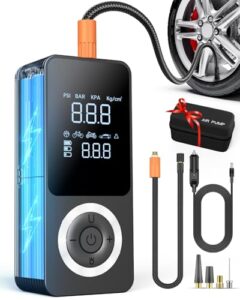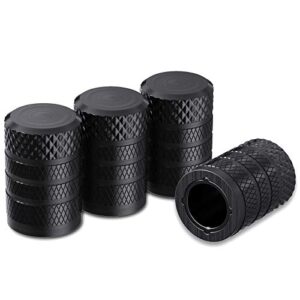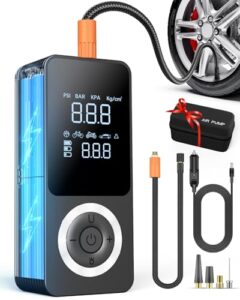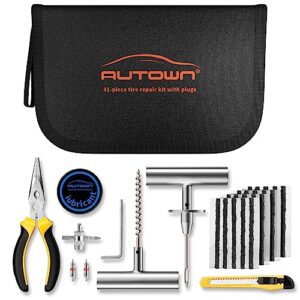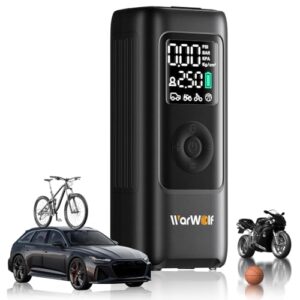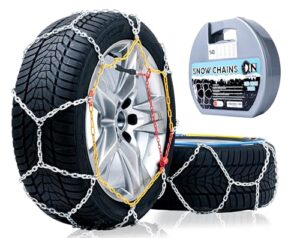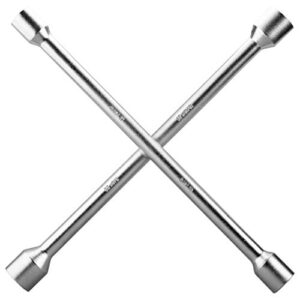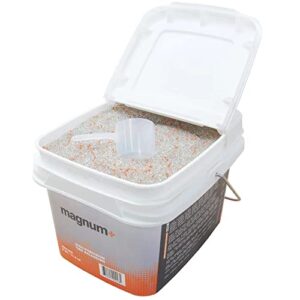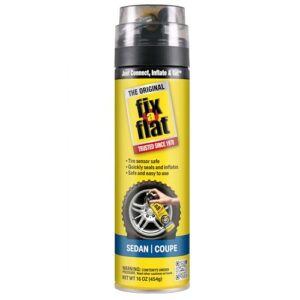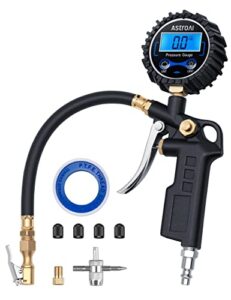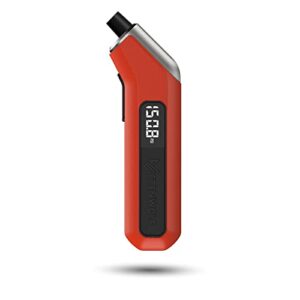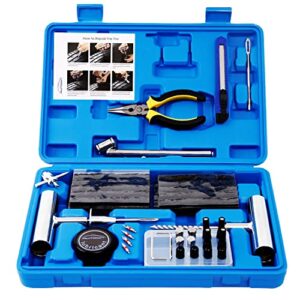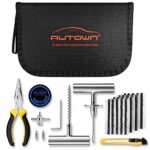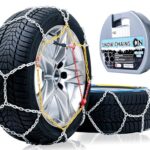If you get a flat tire on the freeway, immediately signal, and slowly move to the rightmost lane or shoulder. Ensure your hazard lights are on to alert other drivers.
Experiencing a flat tire while driving can be stressful, especially on a busy freeway. It’s crucial to remain calm and focus on your safety and that of other road users. Ideally, driving to a complete stop on a straight section of the road where you’re visible from a distance is your best bet.
Quick assessment of traffic and your surroundings before taking action reduces the risk of accidents. After stopping, setting up warning triangles or flares, if available, can provide extra visibility, thereby preventing potential collisions. Remember, your immediate actions are pivotal not only to the repair process but also to ensuring everyone’s safety.

Initial Reaction To A Freeway Flat Tire
A flat tire on the freeway is never planned and can overwhelm the best of us. Your safety and the safety of your passengers and fellow drivers is the main priority. Here are steps to manage this stressful situation with precision and calmness.
Staying Calm And Focused
Keep Cool to Stay Safe. When your car starts to wobble or you hear that dreaded popping sound, your heart might race. A clear mind is your best tool now. Keep your hands firm on the wheel, gently reduce your speed, and don’t slam on the brakes. Glance through your rearview mirror, signal, and move towards the right-hand side of the freeway.
Assessing Your Surroundings
- Search for a Safe Spot. Pinpoint a stretch of road-wide enough to stay clear of fast-moving traffic.
- Use Your Hazard Lights. These blinking red lights tell others you need help and they must give you space.
- Know Where You Are. Recognize landmarks or exit signs to relay your location to roadside assistance.
- Stay Inside Your Car. If the road shoulder is narrow, remain in your vehicle with the seatbelt on lest it’s unsafe.

Pulling Over Safely
Pulling Over Safely is crucial when faced with a flat tire on the freeway. Acting quickly and cautiously is key. The right steps can keep everyone safe and prevent further damage to your vehicle.
Finding The Right Spot To Stop
It’s important to choose a safe spot to bring your car to a halt. Look for a flat surface, away from traffic.
- Avoid curves or hills where visibility is low.
- Ensure your chosen spot is sturdy to support a jack if needed.
- Keep a safe distance from the road to avoid oncoming vehicles.
Using Your Turn Signals And Hazard Lights
Signaling is vital to inform other drivers of your intentions. Engage your turn signal before moving out of traffic.
Once stopped, turn on hazard lights immediately. This alerts others you’re stationary and to proceed with caution. Keep them on until help arrives or the tire is safely changed.
Assessing The Damage
Encountering a flat tire on the freeway is a daunting experience. Your safety and rapid recovery from the situation hinge on an accurate damage assessment. Here’s how to pinpoint the extent of damage and decide on the next steps.
Determining The Severity Of The Flat Tire
Start by evaluating the flat tire’s condition. Check for simple punctures, sidewall damage, or complete tire blowouts. Use your visual inspection to gauge the damage.
- Identify the size of the puncture or tear
- Examine the rim for potential damage
- Note any objects lodged in the tire
Remember, a small puncture may be repairable, while a shredded tire means it’s time for a replacement.
Deciding Whether To Call For Help Or Fix It Yourself
After assessing the damage, it’s decision time. Evaluate your comfort level and the resources at your disposal.
| Consideration | Call for Help | Fix It Yourself |
|---|---|---|
| Safety | High-traffic areas might require professional help | Isolated spots might be safe for DIY |
| Skills | Lack of experience might call for assistance | If confident, proceed with cautious self-repair |
| Tools | No tools on hand means seeking outside aid | Proper kit and spare tire allow for self-help |
| Time | Pressing schedules may necessitate a quick help call | Time availability might make self-repair feasible |
Choose wisely between calling roadside assistance or employing your own repair kit. This decision impacts your safety and schedule.
Diy Tire Repair On-the-go
Imagine this: a flat tire on the freeway, and the nearest help is miles away. But fear not, with a bit of DIY know-how, you’ll be back on the road in no time. Let’s talk about DIY Tire Repair On-The-Go!
Gathering Your Tools
Preparation is key for DIY tire repair. Ensure you have these tools:
- Jack and lug wrench: For lifting the car and removing the tire.
- Spare tire: Check it’s properly inflated and ready to use.
- Wheel wedges: Keep your car from rolling.
- Flashlight: Just in case it’s dark.
- Gloves and a mat: Keep your hands and knees clean.
Step-by-step Flat Tire Replacement
Safety first! Pull over to a safe location away from traffic.
- Turn on your hazard lights and apply the parking brake.
- Place wheel wedges under the opposite tire that’s staying on the ground.
- Remove the wheel cover and loosen the lug nuts with your lug wrench.
- Use the jack to lift the car off the ground.
- Take off the lug nuts and replace the flat tire with the spare.
- Put lug nuts back on, lower the car, and tighten the nuts fully.
- Check the pressure of your spare tire to ensure safety.
Remember, always consult your vehicle’s owner’s manual for specific instructions. With this knowledge, you can tackle a flat tire on the freeway and get back to your journey with confidence.
Safety Precautions During Tire Change
Encountering a flat tire on the freeway can be intimidating. Your safety is paramount, not just for yourself but also for other road users. Preparedness and understanding the right safety precautions can make all the difference. So, what should you do to stay safe while changing a tire on a bustling freeway?
Using Flares Or Cones For Visibility
Ensuring oncoming drivers can see you from a distance is critical. Here’s how to maximize visibility:
- Turn on your hazard lights immediately.
- Place flares or cones behind your car to alert incoming traffic.
- Position these at least 30 feet from your vehicle, giving others ample time to react and slow down.
Keeping Clear Of Oncoming Traffic
While changing your tire, keep a safe distance from the flow of traffic:
- Always stay on the vehicle’s shoulder side, away from moving cars.
- Be mindful of your surroundings and move quickly but safely.
- Never turn your back to oncoming vehicles.
Remember, keeping yourself visible and aware can prevent further accidents and ensure a quicker, safer tire change on the freeway.
Post-repair Actions
Once you fix a flat tire on the freeway, taking proper post-repair actions is vital. These steps ensure your vehicle remains safe to drive. Let’s dive into what you need to do next.
Checking Tire Pressure
Regular tire pressure checks are crucial for a smooth ride. Use a gauge to check the pressure. Make sure it matches the manufacturer’s recommended levels. An underinflated or overinflated tire can lead to future problems.
- Locate the recommended tire pressure in your vehicle’s manual.
- Remove the tire’s valve cap.
- Press the tire gauge firmly onto the valve.
- Read the gauge and inflate or deflate as necessary.
- Replace the valve cap once finished.
Visiting A Mechanic For A Professional Inspection
A professional inspection is a smart move after experiencing a flat tire. A mechanic can spot issues you might miss. They can confirm if your spare or repaired tire is good to go.
| Service | Description | Benefits |
|---|---|---|
| Tire Assessment | A thorough check for punctures, wear, and tear | Prevents future flats |
| Wheel Alignment | Ensuring wheels are correctly aligned | Improves handling and tire lifespan |
| Balance Check | Verifying the wheel-tire weight is evenly distributed | Reduces vibrations and wear |
Remember to schedule regular maintenance for the best performance. This can help you avoid unexpected incidents on the road.

Frequently Asked Questions
Can I Fix A Flat Tire On The Freeway Myself?
Changing a tire on the freeway is risky. It’s recommended to drive slowly to the nearest exit or safer location if possible. Always assess safety before attempting a fix. If unsure or unsafe, call for roadside assistance.
How Do I Safely Pull Over With A Flat Tire?
Signal carefully, and gradually reduce speed. Avoid sudden movements and brake gently. Aim to reach the freeway’s shoulder or an emergency lane. Turn on hazard lights immediately to alert other drivers, ensuring your and their safety.
What Should Be In My Flat Tire Emergency Kit?
Your emergency kit should include a spare tire, jack, lug wrench, wheel wedges, and a flashlight. For added safety, carry reflective triangles, gloves, and a rain poncho. It’s best to check your kit regularly for readiness.
How Long Can I Drive On A Freeway Flat Tire?
Avoid driving on a flat tire as it can cause rim damage and loss of control. If necessary, drive at a low speed and for the shortest distance possible to reach a safe location where you can assess the tire.
Conclusion
Experiencing a flat tire on the freeway can be daunting. However, by following these steps, you can handle the situation with confidence. Ensure your emergency kit is always stocked. Practice safety first, and if you’re unsure, call for assistance. Safe travels, and remember that preparation is key to a smooth journey.




